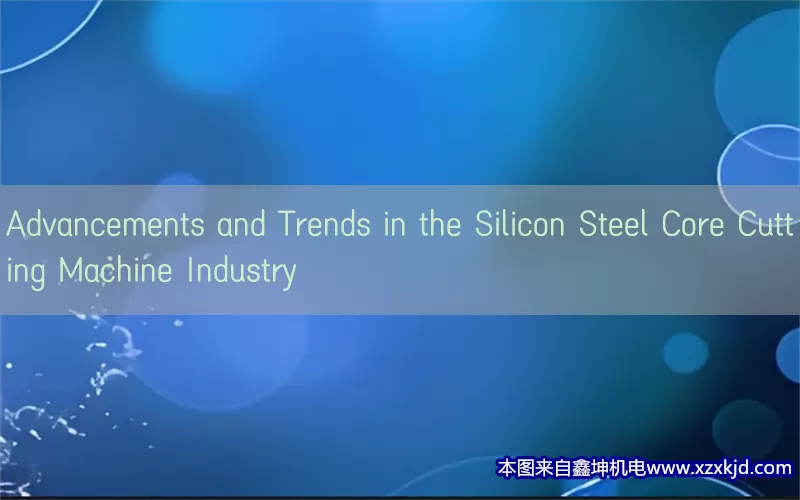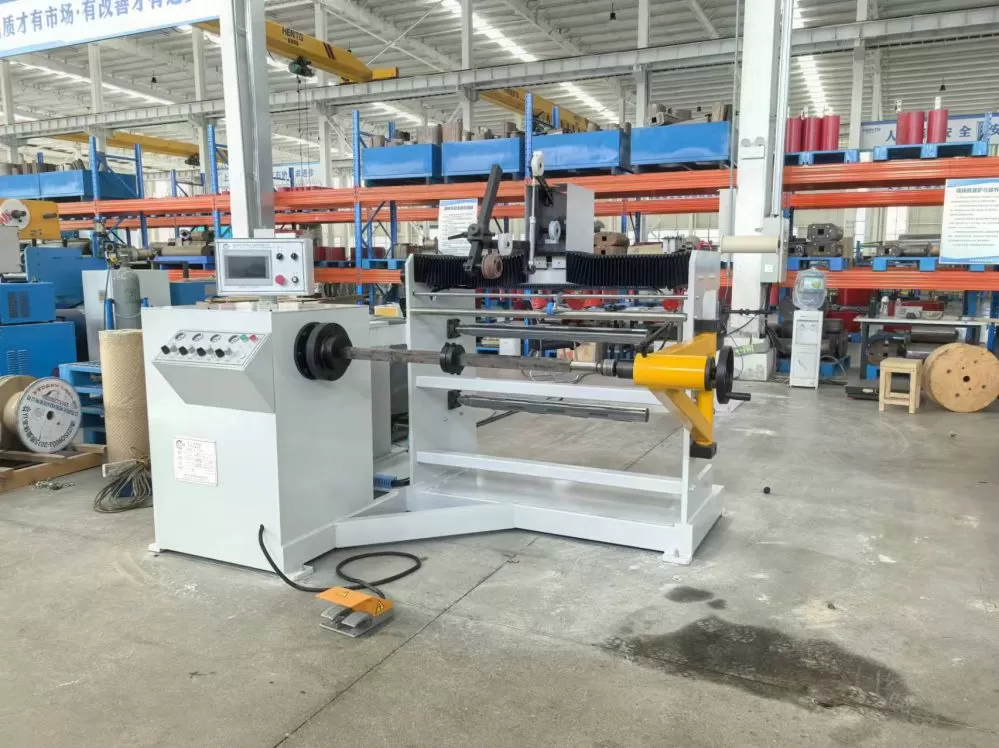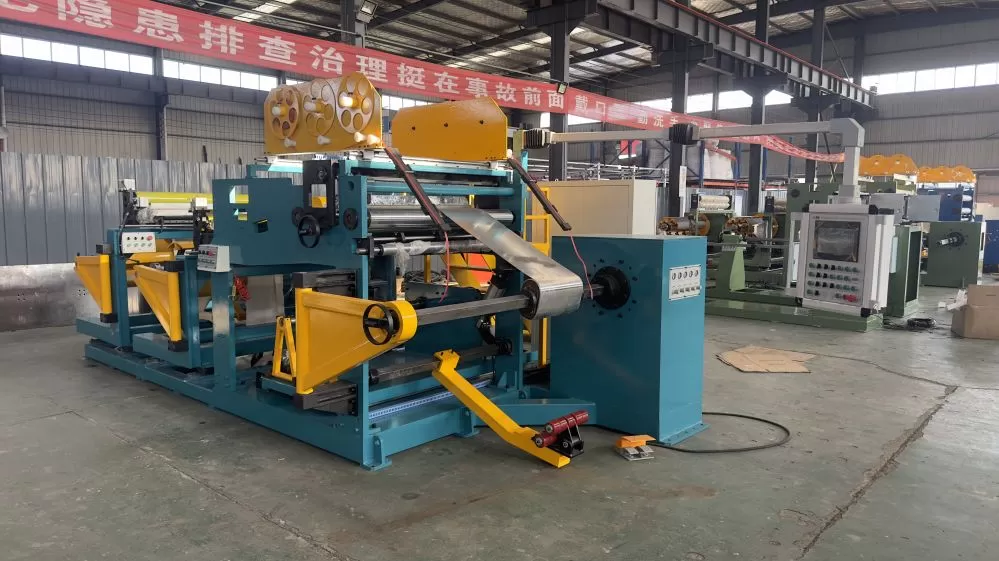Advancements and Trends in the Silicon Steel Core Cutting Machine Industry
In the ever-evolving world of transformer manufacturing, silicon steel core cutting machines are fundamental tools that shape the industry’s efficiency, precision, and growth. As the demand for energy-efficient and high-performance transformers rises, manufacturers look to cutting-edge silicon steel core cutting machines to keep pace with modern energy demands. These machines, designed specifically for processing silicon steel lamination, are crucial for building high-quality transformer cores, enabling producers to maximize energy efficiency while minimizing material waste and production costs.

Driving Demand for Silicon Steel Core Cutting Machines
The global energy landscape is rapidly shifting toward cleaner, more sustainable energy solutions, creating a ripple effect across industries reliant on electrical power. As transformers play an essential role in power distribution and transmission, demand for high-performance and low-loss transformer cores has surged. Silicon steel core cutting machines, which craft the precise dimensions and shapes of transformer core laminations, are now integral to this production process. They contribute to improved transformer efficiency, crucial for reducing energy loss and meeting stringent regulatory standards in the energy sector.
Silicon steel, also known as electrical steel, is a specialized material known for its magnetic properties and low hysteresis loss, making it ideal for transformer cores. However, its highly specific requirements call for precise cutting and shaping techniques that only advanced silicon steel core cutting machines can provide. These machines ensure that silicon steel laminations fit seamlessly into the core assembly, optimizing performance and minimizing energy loss.
Industry Trends Driving Technological Innovations
As the silicon steel core cutting machine industry expands, technological advancements emerge to address the growing needs of transformer manufacturers. Several key trends have shaped recent innovations:
Automation and Digitalization: Automation is revolutionizing the production process for silicon steel core cutting machines, enabling manufacturers to streamline workflows, minimize human error, and improve production speeds. Automated cutting solutions reduce manual labor, allow for consistent quality, and increase production efficiency, making these machines a valuable asset for transformer manufacturers. Digitalization, particularly with IoT-enabled systems, further enhances operational insights, allowing remote monitoring and predictive maintenance to optimize machine lifespan and efficiency.
Precision Cutting Technology: Accuracy is paramount in transformer core manufacturing, where even slight deviations can lead to increased energy losses. Recent advancements in laser cutting and CNC (Computer Numerical Control) technologies have elevated precision cutting to new levels, enabling machines to achieve exacting tolerances while maximizing yield. This precision ensures transformer cores are constructed with optimal magnetic performance, a critical factor for efficient energy transmission.
Sustainability and Material Efficiency: The rising emphasis on sustainability has impacted material utilization and waste reduction within the transformer industry. Silicon steel core cutting machines now incorporate material optimization algorithms that enable maximum yield from each steel sheet, minimizing scrap and reducing production costs. Environmentally conscious manufacturers are also exploring sustainable practices, like recycling silicon steel scrap, aligning with global trends toward greener manufacturing processes.
Customization for Market Needs: Silicon steel core cutting machine manufacturers recognize that transformer production needs vary across applications, from small-scale distribution transformers to large power transformers. Consequently, many machines now offer customization options that allow manufacturers to adjust cutting patterns, sheet thickness, and core shapes. This flexibility supports a diverse range of transformer designs while meeting the specific efficiency requirements of each application.
Industry Growth and Competitive Landscape
The global demand for silicon steel core cutting machines is projected to grow significantly, driven by the transformer industry's expansion and the worldwide push for energy-efficient solutions. Regions like North America, Europe, and Asia are at the forefront, with Asia-Pacific in particular emerging as a major growth center due to its rapid industrialization and significant investments in power infrastructure. This growth has led to heightened competition among silicon steel core cutting machine manufacturers, prompting companies to invest in research and development to maintain a competitive edge.
Top players in the market are consistently enhancing their machines with advanced technology, while new entrants explore niche areas such as compact design for space-saving applications or ultra-precision machines for specialized uses. This competitive landscape has accelerated the pace of innovation, leading to new products that feature faster speeds, higher accuracy, and greater adaptability.
The Role of AI and IoT in Shaping the Future
Artificial Intelligence (AI) and the Internet of Things (IoT) are transforming the silicon steel core cutting machine industry. AI algorithms, integrated with cutting systems, now enable machines to optimize cutting patterns automatically based on the type and thickness of the silicon steel, resulting in increased accuracy and less material waste. Additionally, IoT connectivity allows for real-time data collection on machine performance, supporting predictive maintenance practices that help reduce downtime and extend equipment life. By leveraging AI and IoT, manufacturers can improve production efficiency, maximize output quality, and minimize operational costs, addressing a critical need in a competitive industry landscape.
Challenges and Opportunities
While the industry is primed for growth, it faces challenges related to cost and resource availability. The initial investment in advanced silicon steel core cutting machines, equipped with automation and precision features, can be high, limiting accessibility for small to medium enterprises. Moreover, as demand for silicon steel rises, the supply chain must adapt to prevent material shortages, which could hinder production.
Yet, these challenges present opportunities. Manufacturers of silicon steel core cutting machines can capitalize on the growing interest in energy-efficient transformers by offering tailored solutions for different market segments. Additionally, innovations in material science could lead to the development of alternative materials or enhanced silicon steel grades, creating new possibilities for the transformer industry.
Future Outlook: Trends to Watch
The future of the silicon steel core cutting machine industry is bright, shaped by ongoing advancements and market demands. As global energy policies continue to push for efficiency and sustainability, transformer manufacturers will increasingly rely on advanced core cutting machines to meet these standards. Some trends to watch include:
Growth in Smart Factories: With the rise of Industry 4.0, smart manufacturing practices are reshaping the silicon steel core cutting landscape. Smart factories utilize interconnected machines, data analytics, and automated workflows to achieve optimal production efficiencies. The integration of silicon steel core cutting machines into such environments can further enhance productivity and operational insight.
Expansion in Renewable Energy Sectors: Renewable energy projects, such as wind and solar farms, require robust transformer solutions to manage energy distribution effectively. Silicon steel core cutting machines play a vital role in producing transformer cores that support renewable energy systems, making this an exciting sector with significant growth potential.
Enhanced Focus on Research and Development: As the demand for specialized and energy-efficient transformer cores rises, so too will the emphasis on R&D in the silicon steel core cutting machine industry. Companies that prioritize innovation in automation, material optimization, and precision engineering will likely lead the market in the years to come.
In conclusion, the silicon steel core cutting machine industry stands at the forefront of transformer manufacturing, enabling the development of energy-efficient and high-performance transformers essential for a sustainable future. With trends like automation, AI, and renewable energy shaping its trajectory, this industry is set to play an increasingly vital role in supporting global energy needs and environmental goals.
英雄不问出处,文章要问来源于何处。
提示:在享受本文内容的同时,请注意版权归属 徐州鑫坤机电设备有限公司https://www.xzxkjd.com如果您觉得有价值欢迎分享,但请务必注明出处,感谢您的理解,谢谢!
以下部分内容需要登录查看 立即登录
相关内容
- 供需裂口持续扩大:2025年铜价暴涨,产业链如何应对?
- 铜,新时代的“石油”?2025年价格狂飙背后的战略博弈
- 从能源革命到智能时代:2025铜价暴涨背后的全球新逻辑
- 铜价创历史新高!绿色转型与供需失衡背后的财富浪潮
- 2025铜价为何一飞冲天?三大核心驱动力深度解析
- 上海非急救出租服务全解析
- 深耕中考复读赛道 深圳深才教育为复读生搭建升学桥梁
- 阳光下的童年:那些被温暖照亮的纯真时光
- 群晖DSM7.0-7.21监控套件Surveillance Station 9.20-11289开心版60个许可证设置教程(无重启、无断流、无卡死、史上最完美)
- 云服务器+SD-WAN组网和域名DNS解析
- 在云主机上安装iKuai OS,实现SD-WAN组网,利用云主机80;443端口搭建企业网站。个人博客。让云主机当做你的堡垒机,实现数据本地化。
- 中央空调只开一台=全开耗电?真相让人意外!
 简体中文
简体中文 繁體中文
繁體中文 English
English Nederlands
Nederlands Français
Français Русский язык
Русский язык Polski
Polski 日本語
日本語 ภาษาไทย
ภาษาไทย Deutsch
Deutsch Português
Português español
español Italiano
Italiano 한어
한어 Suomalainen
Suomalainen Gaeilge
Gaeilge dansk
dansk Tiếng Việt
Tiếng Việt Pilipino
Pilipino Ελληνικά
Ελληνικά Maori
Maori tongan
tongan ᐃᓄᒃᑎᑐᑦ
ᐃᓄᒃᑎᑐᑦ ଓଡିଆ
ଓଡିଆ Malagasy
Malagasy Norge
Norge bosanski
bosanski नेपालीName
नेपालीName čeština
čeština فارسی
فارسی हिंदी
हिंदी Kiswahili
Kiswahili ÍslandName
ÍslandName ગુજરાતી
ગુજરાતી Slovenská
Slovenská היברית
היברית ಕನ್ನಡ್Name
ಕನ್ನಡ್Name Magyar
Magyar தாமில்
தாமில் بالعربية
بالعربية বাংলা
বাংলা Azərbaycan
Azərbaycan lifiava
lifiava IndonesiaName
IndonesiaName Lietuva
Lietuva Malti
Malti català
català latviešu
latviešu УкраїнськаName
УкраїнськаName Cymraeg
Cymraeg ກະຣຸນາ
ກະຣຸນາ తెలుగుQFontDatabase
తెలుగుQFontDatabase Română
Română Kreyòl ayisyen
Kreyòl ayisyen Svenska
Svenska հայերեն
հայերեն ဗာရမ်
ဗာရမ် پښتوName
پښتوName Kurdî
Kurdî Türkçe
Türkçe български
български Malay
Malay मराठीName
मराठीName eesti keel
eesti keel മലമാലം
മലമാലം slovenščina
slovenščina اوردو
اوردو አማርኛ
አማርኛ ਪੰਜਾਬੀName
ਪੰਜਾਬੀName albanian
albanian Hrvatski
Hrvatski Suid-Afrikaanse Dutch taal
Suid-Afrikaanse Dutch taal ខ្មែរKCharselect unicode block name
ខ្មែរKCharselect unicode block name




